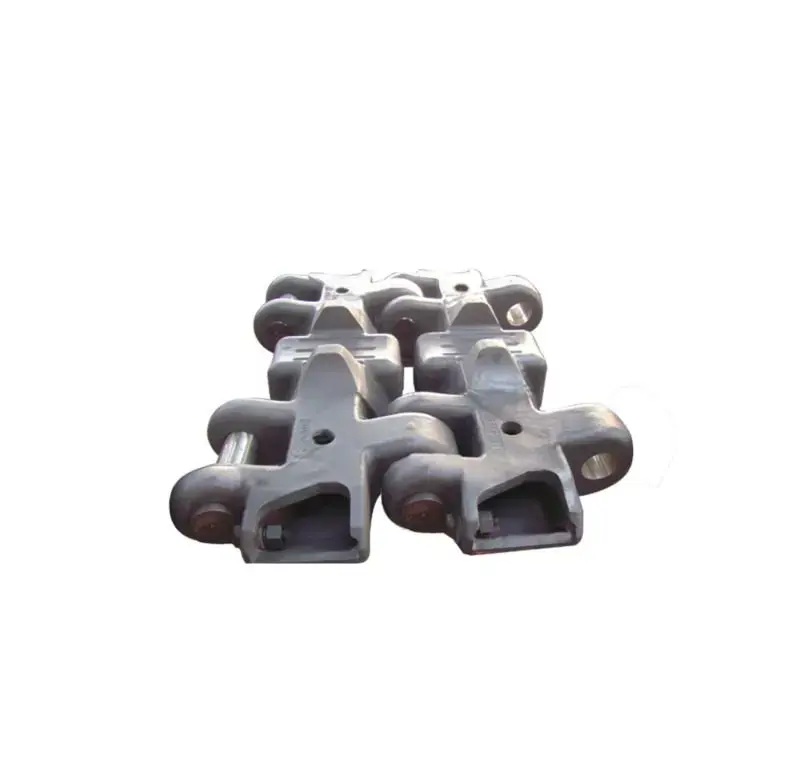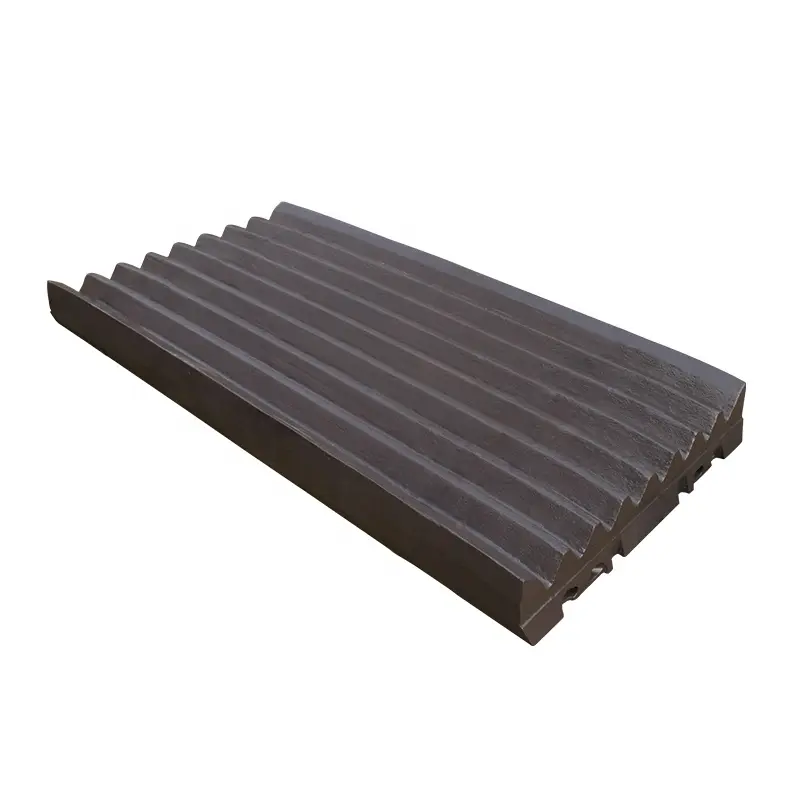What are the differences in maintenance points for different types of crushers?
Different types of crushers due to the working principle, structural characteristics and different applicable materials, the maintenance of the track plate there are certain differences, the following are some common crusher track plate maintenance differences:
Jaw crusher
Extrusion wear concern: jaw crusher mainly through the relative movement of the moving jaw and fixed jaw to crush the material, the work will produce a large extrusion pressure and impact, track plate in addition to bearing the fuselage weight and movement of friction, but also may be damaged by the splash and impact of the material. Therefore, it is necessary to focus on checking the wear caused by material impact and extrusion on the surface of the track plate, especially the part near the crushing chamber, to see if there is serious local wear, deformation or cracking.
Cleaning the discharge area: It is easy to accumulate broken materials near the discharge port, which may enter the gaps and holes of the track plate, accelerating the wear and corrosion of the track plate. It is necessary to clean the discharge area and residual materials on the track plate in time.

Cone crusher
Fine particle material protection: cone crusher is through the rolling mortar wall to the crushing wall movement extrusion material, crushing material particle size is relatively fine. However, fine particle materials are easy to enter the seal and connection parts of the track plate, resulting in seal wear and loose connections. Therefore, pay special attention to the sealing of the track plate, regularly check whether the seal is damaged, and prevent fine particle materials from entering the inside of the track.
Influence of eccentric motion: The movement of parts such as the eccentric shaft sleeve of the cone crusher may cause certain vibration and swing of the fuselage, which has an impact on the force uniformity of the track plate. It is necessary to pay attention to the fastening of the bolts of the track plate, because the vibration is larger, the bolts are easier to loosen, and the frequency of inspection and fastening should be increased.
Impact crusher
Impact wear inspection: The impact crusher uses the plate hammer to impact the material, so that it is broken by collision with the impact plate, and the impact is large. The track plate may be subjected to impact wear due to material bouncing and splashing, especially on the sides and edges of the track plate. It is necessary to focus on checking whether these parts have wear, falling, etc., and timely find and deal with areas with serious wear.
Belt drive correlation: Some impact crushers use belt drive, and the tension and transmission of the belt may indirectly affect the force of the track plate. To ensure that the belt tension is appropriate, avoid the belt is too tight or too loose resulting in unstable operation of the crusher, and then cause additional pressure or impact on the track plate.
Hammer crusher
Material characteristics adaptation: The hammer crusher uses a high-speed rotating hammer head to impact the material for crushing, suitable for brittle materials. If the material is treated with high humidity or strong viscosity, it is easy to adhere to the track plate, affecting the normal operation and heat dissipation of the track plate. According to the characteristics of the material, take appropriate cleaning measures, such as increasing the cleaning frequency or using appropriate cleaning tools.
Hammer wear: The wear of the hammer will affect the working efficiency and impact force distribution of the crusher, which may have different degrees of impact on the track plate. When the hammer head is worn to a certain extent, it should be replaced in time to ensure the normal operation of the crusher and reduce the abnormal impact and wear on the track plate.




